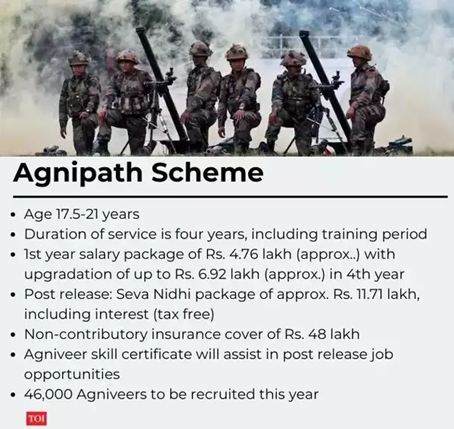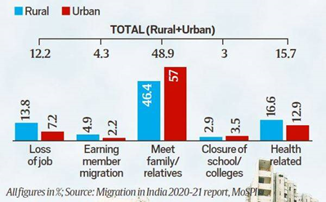Tuesday, 21st June 2022
REN21's Renewables 2022 Global Status Report (GSR 2022)
In News
The Renewables 2022 Global Status Report (GSR 2022) has been recently released by the Renewable Energy Policy Network for the 21st Century (REN21).
Major Highlights of the Report
- Global Clean Energy Transition: The report sends a clear warning that the global clean energy transition is not happening, making it unlikely that the world will be able to meet critical climate goals this decade.
- Share of Renewables: The overall share of renewables in the world's final energy consumption has stagnated -- rising only minimally from 10.6 per cent in 2009 to 11.7 per cent in 2019.
- Energy Crisis: The second half of 2021 saw the beginning of the biggest energy crisis in modern history, exacerbated by the Russian Federation's invasion of Ukraine in early 2022 and unprecedented global commodity shock.
- Government Commitments not met: Although many more governments committed to net zero greenhouse gas emissions in 2021, but, in response to the energy crisis, most countries have gone back to seeking out new sources of fossil fuels and to burning even more coal, oil and natural gas.
- Despite many new commitments to net zero, political momentum has not translated into action.
- Electricity sector: In this sector, record additions in renewable power capacity (314.5 gigawatts, up 17 per cent from 2020) and generation (7,793 terawatt-hours) were unable to meet the overall increase in electricity consumption of six per cent.
- Recovery offset renewables: Despite important green recovery measures in many countries, the strong economic rebound in 2021 -- with global real gross domestic product (GDP) growing 5.9 per cent -- contributed to a four per cent rise in final energy consumption, offsetting the growth of renewables.
- Rising Prices: By the end of the year, gas prices reached around 10 times the 2020 levels in Europe and Asia and tripled in the US, leading to a spike in wholesale electricity prices in major markets by the end of 2021.
Findings w.r.t. India
- India ranked third globally for total renewable power capacity additions with 15.4 GW in 2021, following only China (136 GW) and the US (43 GW).
- India added 843 MW of hydropower capacity in 2021, raising the total capacity to 45.3 GW.
- India was the second largest market in Asia for new solar PV capacity and third globally (13 GW of additions in 2021). It ranked fourth for total installations (60.4 GW), overtaking Germany (59.2 GW) for the first time.
About REN21
- The GSR annually takes stock of renewable energy deployment worldwide. The 2022 report is the 17th consecutive edition.
- REN21 is the only global renewable energy community of actors from science, governments, NGOs and industry.
Sources:
West Seti power project - Edukemy Current Affairs
In News
India will be taking over an ambitious hydropower project in Nepal-The West Seti nearly four years after China withdrew from it, ending a six-year engagement between 2012 and 2018.
India’s National Hydro Power Corporation (NHPC) has begun preliminary engagement with regards to the West Seti Hydropower Project.
The West Seti Power Project
- It is a proposed 750-megawatt Hydropower Project, which is to be built on the Seti river in far-western Development Region of Nepal.
- Recently, the government has remodeled the project as West Seti and Seti River (SR-6), a joint storage project, with the capacity to generate 1,200 megawatts of electricity.
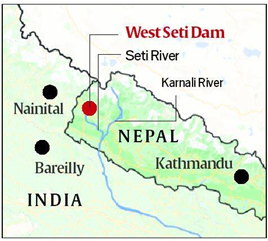
- Particularly, it is a storage scheme designed to generate and export large quantities of electrical energy to India.
- This storage or reservoir will fill up during the monsoon season and the water will be drawn to generate power during peak hourseach day in the dry season.
- The project is envisaged to provide Nepal 31.9% electricity free.
- The locals affected by the project in terms of rehabilitation and displacement will be given a share of Nepali Rs 10 million plus 30 units of electricity per month free.
Other Power Projects between India and Nepal
- Nepal isrich in power sources with around 6,000 rivers and an estimated potential for 83,000 MW of Hydro-power.
- Mahakali treaty was signed in 1996 between India and Nepal to produce 6,480 MW of Electricity. India has still not been able to come out with the Detailed project Report.
- There was a contract on Upper Karnali project signed between the two sides. The project is stalled due to lack of consensus over power purchase agreementwith India alongside seismic sensitivity of the Himalayan Region.
- India was successful in executing the 900-MW Arun Three project in eastern Nepal’s Sankhuwa Sabha, which is being executed by India’s Sutlej Vidhyut Nigam under a BOOT scheme whose foundation was laid in 2018 to be completed by2023.
- Nepal has a massive power shortfall as it generates only around 900 MW against an installed capacity of nearly 2,000 MW. Although it is currently selling 364 MW power to India, it has over the years importing from India.
Source:
- What West Seti power project can mean for India-Nepal ties
- China Agrees to invest in Nepal’s Biggest Project
Image source:
The Asia University Rankings 2022
In News
The Times Higher Education (THE) has recently released the Asia University Rankings 2022.
Highlights of the Report: India
- Only One Institute in the top 50: The only institute that has made it to the top 50 on the list is the Indian Institute of Science (IISc), Bangalore with a rank of 42.
- Debut Institute: The JSS Academy of Higher Education and Research has made its debut in 65th place, followed by the Indian Institute of Technology (IIT) Ropar at 68 and IIT Indore at rank 87 respectively.
- Other Indian Institutions: Compared to the positions achieved in 2021, all the Indian institutes that were in top-100 have slipped down.
Global Scenario
- Most-Represented Nation: Japan is the most-represented nation again this year, with 118 institutions, up from 116 last year.
- The top two universities on this list are from China for the third consecutive year- Tsinghua and Peking universities holding the first and second places,
- A university from Palestine has been ranked for the first time and the representations from Saudi Arabia increased in the top 100 from four to six.
Overall Performance:
- The recent rankings show the extraordinarily diverse range of excellence across the Asian continent – with 31 Asian nations/regions making the list, and with successes in all corners of the continent.
- The data demonstrate that Asia is perhaps the most exciting and most dynamic continent for higher education, research and innovation in the world today.

Source:
- THE Asia University Rankings 2022: India emerges as third most-represented nation; Indian institutes in top-100 slip from 2021 rank
- 71 Indian universities make it to the Times Higher Education Asia University Rankings 2022
Image source:
International Yoga Day - Edukemy Current Affairs
On June 21 every year, International Yoga Day is celebrated to spread awareness about the invaluable benefits of Yoga. his year's theme will be “Yoga for Humanity “.The United Nations General Assembly on December 11, 2014, announced that June 21 will be seen as International Yoga Day or World Yoga Day. As per Patanjali’s Yogasutras, the 8 limbs of Yoga are Yama, Niyama, Asana, Pranayama, Pratyahara, Dharana, Dhyana and Samadhi. The Yogs Sutras of Patanjali are divided into four chapters Samadhi Pada, Sadhana Pada, Vibhuti Pada and Kaivalya Pada.
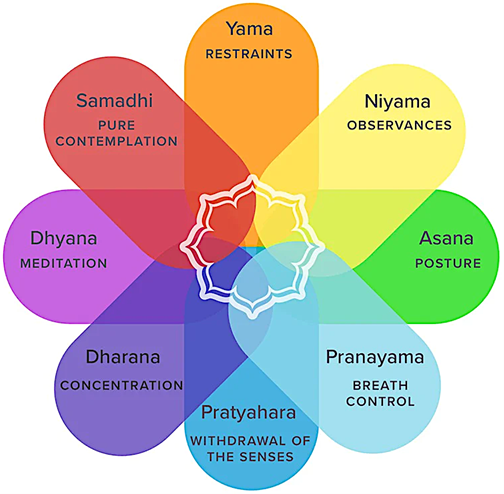
Patanjali was a Saivite Natha siddha (ca 200 BCE) who codified the ancient yoga philosophy which outlines the path to enlightenment through purification, control and transcendence of the mind. His system is one of the six classical philosophical systems (darshanas) of Hinduism and is known as Yoga Darshana.
Sources:
Black Swan Event - Edukemy Current Affairs
- Context: A recent study by the Reserve Bank of India (RBI) has spoken about the possibility of capital outflows of around $100 billion from India in case of a major global risk scenario or a “black swan” event.
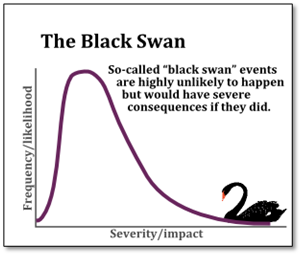
- A black swan is a rare, unpredictable event that comes as a surprise and has a significant impact on society or the world.
- These events are said to have three distinguishing characteristics:
- they are extremely rare and outside the realm of regular expectations;
- they have a severe impact after they hit and
- they seem probable in hindsight when plausible explanations appear
- The black swan theory was put forward by Nassim Nicholas Taleb in 2001, that was later popularised in his 2007 book – The Black Swan: The Impact of the Highly Improbable.
- His work predated the 2008 global financial crisis – a black swan event triggered by a sudden crash in the booming housing market in the US. The fall of the Soviet Union, the 9/11 attack also fall in the same category.
- However he called the covid-19 pandemic as “white swan”, arguing that it was predictable, and there was no excuse for companies and governments not to be prepared for it.
Source:
Image source:
Government Allows Surety Bonds
- Context: The government in its 2022-23 budget, has allowed the use of surety insurance bondsas a substitute for bank guarantees in case of government procurement and also for gold imports.
- Asurety bond is a legally binding contract entered into by three parties—the principal, the obligee, and the surety.

- The obligee, usually a government entity, requires the principal, typically a business owner or contractor, to obtain a surety bond as a guarantee against future work performance.
- Surety bonds are majorly aimed at infrastructure development, mainly to reduce indirect cost for suppliers and work-contractors thereby diversifying their options and acting as a substitute for bank guarantee.
- This bond is provided by the insurance companyon behalf of the contractor to the entity which is awarding the project.
- Surety bondsprotect the beneficiary against acts or events that impair the underlying obligations of the principal.
- They guarantee the performance of a variety of obligations, from construction or service contracts to licensing and commercial undertakings.
Source:
- Surety Bonds stuck: Irdai asked to come up with model product
- Surety Bonds caught: Irdai requested to provide you with mannequin product
Image source:
Sovereign Gold bond Scheme - Edukemy Current Affairs
- Context: The first tranche of the Sovereign Gold Bond Scheme (SGB) 2022-23 by the central government has been recently open for subscription.
- The SGB scheme waslaunched in 2015 to reduce the demand for physical gold and shift a part of the domestic savings used for the purchase of gold into financial savings.
- The Gold Bonds are issued asGovernment of India Stock under the Government Securities (GS) Act, 2006.

- These are issued by the RBI and are sold through Commercial banks, Stock Holding Corporation of India Limited (SHCIL), designated post offices and recognised stock exchanges that include NSE and BSE Exchange, either directly or through agents.
- The bonds are restricted for sale to resident individuals, Hindu Undivided Families (HUFs), trusts,universities and charitable institutions.
- Gold bond prices are linked to the price of gold of 999 purity (24 carats) published by India Bullion and Jewellers Association (IBJA), Mumbai and can be purchased in the multiples of one unit, up to certain thresholdsfor different investors.
- The upper limit for retail (individual) investors and HUFs is 4 kilograms (4,000 units) each per financial year.For trusts and similar entities, an upper limit of 20 kilograms per financial year is applicable.
- Minimum permissible investment is 1 gram of gold.
- The gold bonds come with amaturity period of eight years, with an option to exit the investment after the first five years.
- A fixed rate of 2.5% per annum is applicable on the scheme, payable semi-annually and the interest on them shall be taxable as per the provision of Income Tax Act, 1961.
Source:
- Sovereign gold Bond saw maximum traction in Covid-hit years, next SGBs tranche opens Monday
- Sovereign Gold Bond 2022-23 – Series I available from June 20-24: Here’s everything you need to know
Image source:
Fatal Lightening - Edukemy Current Affairs
- Context: Seventeen people have been killed by lightning over the last two days in various parts of Bihar.
- In India, lightning kills about 2,000-2,500 people every year.
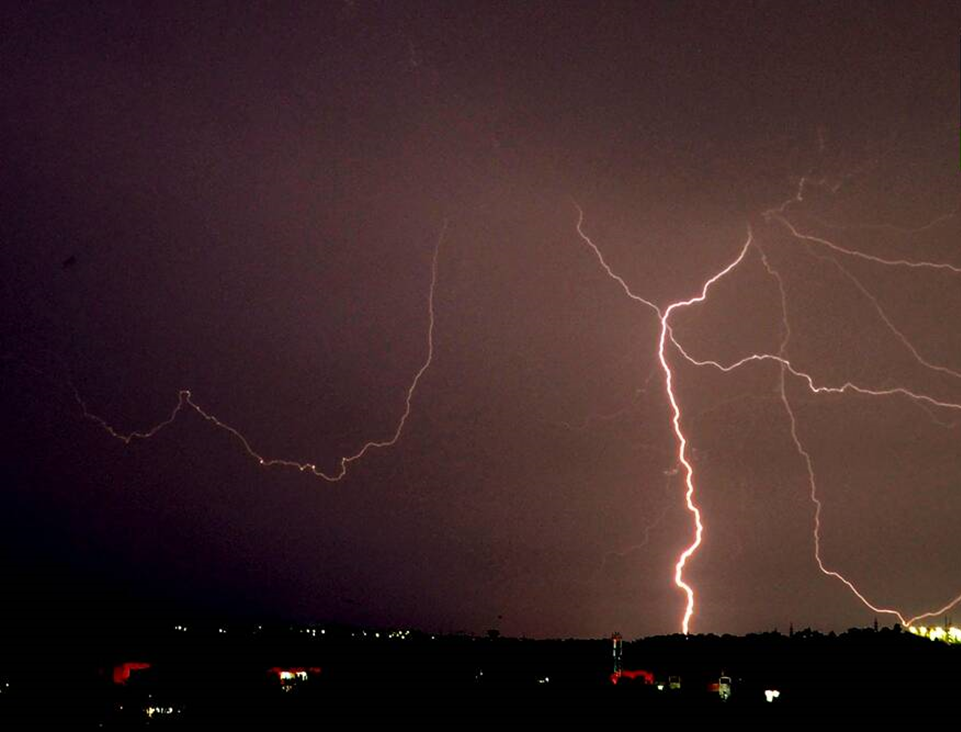
- Scientifically, lightning is a rapid and massive discharge of electricity in the atmosphere some of which is directed towards earth. The discharges are generated in giant moisture-bearing clouds that are 10-12 km tall.
- The base of these clouds typically lie within 1-2 km of the Earth’s surface, while the top is 12-13 km away. Temperatures in the top of these clouds are in the range of –35° to –45°C.
- An annual report on lightning is prepared by the Climate Resilient Observing Systems Promotion Council (CROPC) and India Meteorological Department. Madhya Pradesh has reported the largest number of cloud to ground lighting strikes, followed by Chhatisgarh,
- Lightning is fairly common, though it is not often realised in the urban centres. More than 96% of lightning deaths happen in rural areas.
- Lightning is not classified as a natural disaster in India.
Source:
ASEAN Engagement: Key Priority for India
Essence: India's 'Act East' policy is a core tenet of its Indo-Pacific vision. In this, the role of ASEAN grouping is very critical. The centrality of ASEAN in Indo-Pacific has been emphasized by India. The article mentions the Indo-Pacific Economic Framework (IPEF), which is a new initiative to bring together the countries in the Indo-Pacific region. But , the success of the IPEF cannot be predicted as of now. So, the article cautions that India needs to continue its engagement both with Asean and individual member-countries on a bilateral basis.
Why should you read this article?
- To understand the geopolitical dynamics of the Indo-Pacific
- To understand the options available for India to strengthen relations in the Indo-Pacific.
Source:
Rebuilding Schools Post-Covid: Prioritize Student Needs
Essence: The article assesses the impact of education assessment surveys like the National Achievement Survey (NAS). The authors explain how these surveys happen to focus on what the students are unable to do, rather than why students have not been able to embrace their books and schools. The article suggests to find the reasons like lack of accessibility, poverty, covid-19 lockdows, etc. behind the poor performance of students.
Why should you read this article?
- To understand the gaps in education assessment methods
- To understand the real reasons between the bad performance of students
- To know the steps that can be taken to ameliorate the above problems
Source:
Night School changed the Life at 52
Background
- Proper educationimproves people's understanding of the world, making them less susceptible to the bad influence.
- Kalpana Achyut Koletkar, recently cleared her 10th board exams, 37 years after she had first started.
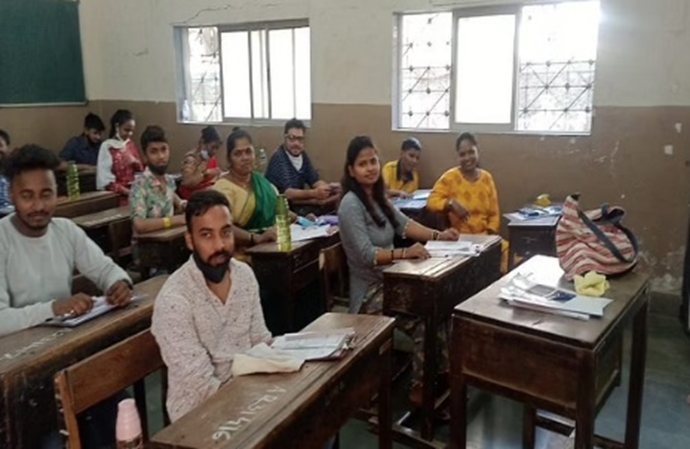
About Kalpana Achyut Koletkar
- Kalpana was at the age 16 years, when her father died and the financial crisis followed. To ensure that her siblings continue their education, she had to quit the education and start working.
- Recently, she started pursuing the dream of completing her education through night schooling free provision of Maharashtra government.
- The night schooling helped her to re-gain the enthusiasm for studies and went on with her studies despite her daily chores.
- With her strong determination, she has cleared her exams with good marks..
Quote: A human being is not attaining his full heights until he is educated. – Horace Mann
Source:
Share the article
Get Latest Updates on Offers, Event dates, and free Mentorship sessions.

Get in touch with our Expert Academic Counsellors 👋
FAQs
UPSC Daily Current Affairs focuses on learning current events on a daily basis. An aspirant needs to study regular and updated information about current events, news, and relevant topics that are important for UPSC aspirants. It covers national and international affairs, government policies, socio-economic issues, science and technology advancements, and more.
UPSC Daily Current Affairs provides aspirants with a concise and comprehensive overview of the latest happenings and developments across various fields. It helps aspirants stay updated with current affairs and provides them with valuable insights and analysis, which are essential for answering questions in the UPSC examinations. It enhances their knowledge, analytical skills, and ability to connect current affairs with the UPSC syllabus.
UPSC Daily Current Affairs covers a wide range of topics, including politics, economics, science and technology, environment, social issues, governance, international relations, and more. It offers news summaries, in-depth analyses, editorials, opinion pieces, and relevant study materials. It also provides practice questions and quizzes to help aspirants test their understanding of current affairs.
Edukemy's UPSC Daily Current Affairs can be accessed through:
- UPSC Daily Current Affairs can be accessed through Current Affairs tab at the top of the Main Page of Edukemy.
- Edukemy Mobile app: The Daily Current Affairs can also be access through Edukemy Mobile App.
- Social media: Follow Edukemy’s official social media accounts or pages that provide UPSC Daily Current Affairs updates, including Facebook, Twitter, or Telegram channels.


